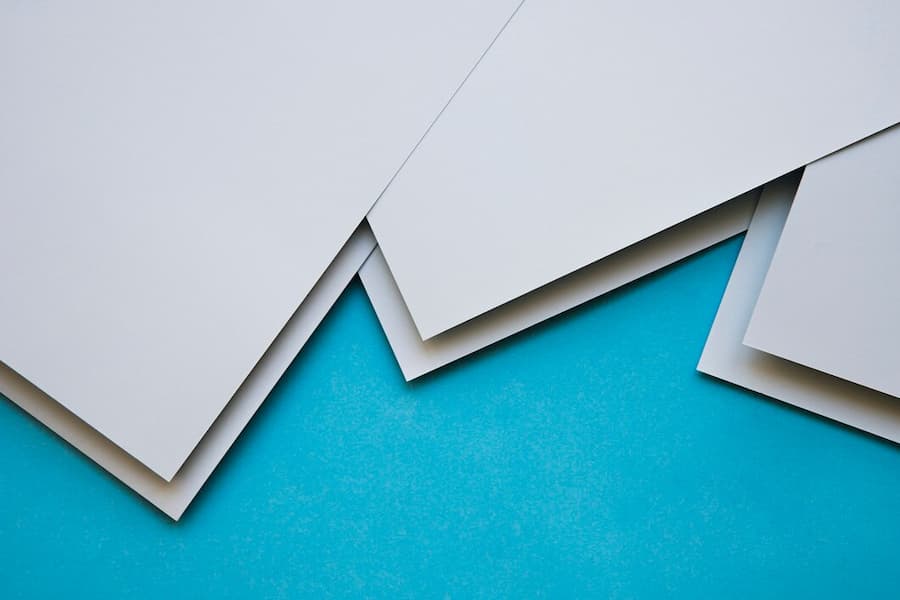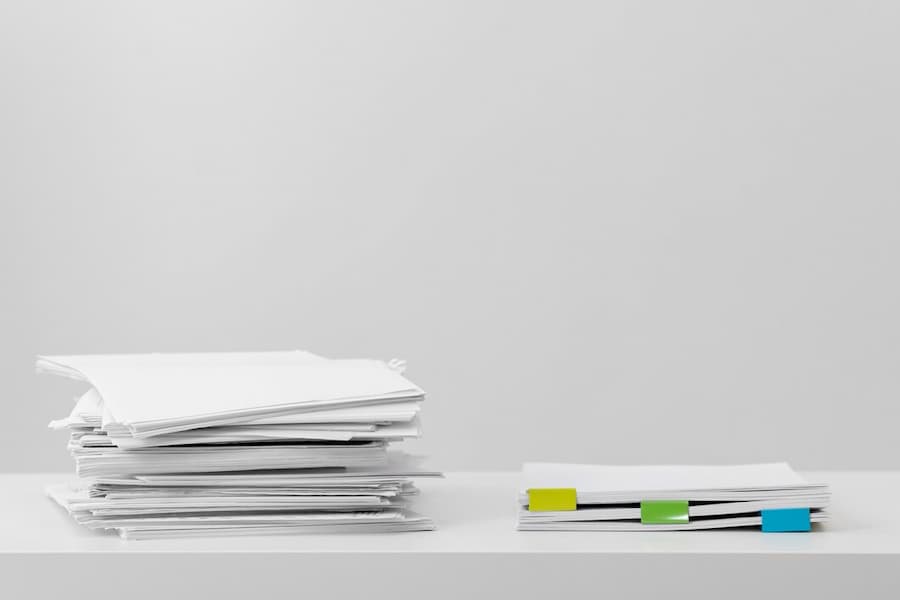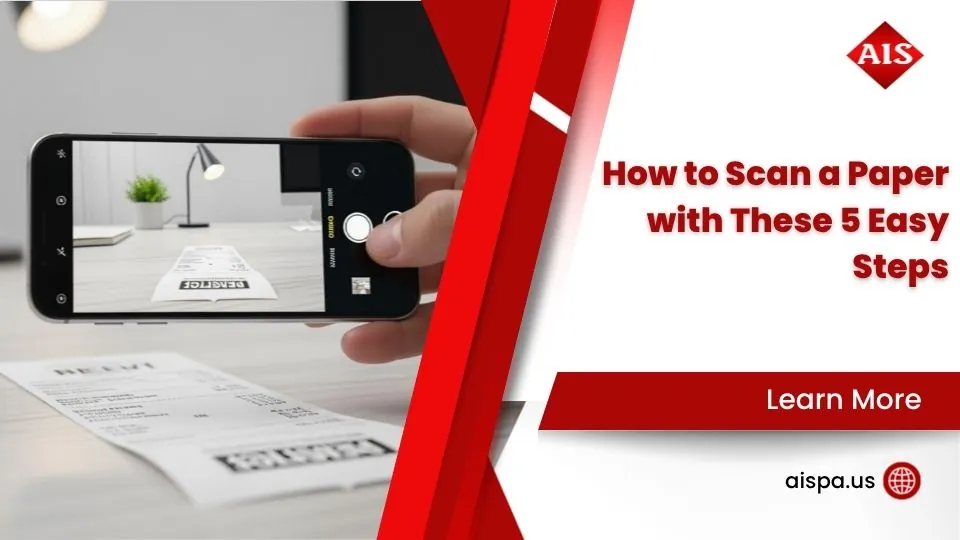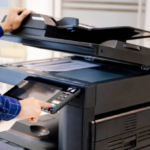Choosing the Right Hard Paper for Printing: 6 Different Types of Paper
Choosing the right printer paper for your print job is crucial, whether it’s for your business, personal use, or special occasions like making invitations or DIY cards. It’s a simple but important decision that can impact the quality of your printed documents. Let’s go over the different types of paper for printing, including cardstock, glossy paper, and matte paper, so you can choose the right paper with confidence.
When it comes to printing documents, you want to make sure you have the right paper that works with inkjet and laser printers. From 8.5 x 11 inch sheets of white cardstock to heavyweight project paper, there are many options to consider. Whether you’re looking for a thinner paper for everyday use or super thick paper for professional business materials, it’s essential to know about the different types and qualities of paper.
Hard Paper for Printing
When it comes to achieving a professional look for your printed materials, the type of paper you choose plays a crucial role. One option to consider is Neenah paper, known for its high-quality and versatile range of paper products. Neenah offers a variety of options, including business card paper, cover stock, and stationery paper, all of which come in a bright white color that is perfect for showcasing your designs.

For those looking for a heavier weight of paper, Neenah also offers cardstock paper with a range of GSM options to suit your specific needs. This uncoated paper is typically used for brochures, greeting cards, and other stationery printing needs. Whether you need a single ream or a larger quantity, you can easily find paper on Associated Imaging Solutions, making it convenient to access this quality paper for your projects.
Incorporating Neenah paper into your print jobs will ensure that your materials look and feel premium, making a lasting impression on your audience.
Printer Paper vs. Copy Paper
Have you ever printed out a special photo or document, only to find that the paper you used didn’t quite give it the quality you were hoping for? Do you know about printer paper vs. copy paper? It’s a common frustration, but understanding the differences between paper types can help you avoid that disappointment.
When it comes to paper weight, there are a few things to consider. The weight of the paper may affect how your printing paper works with your inkjet printer, and the type of paper for printing you choose can make a big difference in the final result. For example, if you’re printing photo paper, you’ll want a thicker paper weight to ensure a professional finish.
Some common types of printer paper include multipurpose copy printer paper, which is great for everyday use, and opaque white paper, which is perfect for postcards and invitations. Soft touch paper is another option, offering a luxurious feel for special projects like arts and crafts or restaurant menus. So, next time you’re choosing the right paper for your print job, consider the different types available and how they can enhance your final product.
The 6 Different Types of Printer Paper
When it comes to choosing the right paper for your printing needs, there are several options to consider. From regular matte paper to glossy paper, bright white paper to photo paper, and heavyweight paper to inkjet paper, each type offers unique benefits for various projects.
Whether you need 25 sheets of white cardstock 8.5 x 11 for a small project or a ream of 500 sheets for a larger endeavor, there’s a paper type that suits your needs. Understanding the differences in paper weight, brightness, and finish can help you make the best choice for your next printing project.

Regular Matte Paper
Regular matte paper is the go-to choice for most basic print jobs. It’s not shiny, and the smooth matte texture helps to absorb ink and quickly dry to avoid smudges and smears. Consider it the classic copy paper. This paper is perfect for everyday printing needs, such as documents, reports, and school assignments.
You can rely on regular matte paper to deliver crisp, clean prints without any distracting shine. It’s the reliable workhorse of the printer paper world, offering a simple, clean finish for all your printing needs.
Glossy Paper
Now, let’s talk about Glossy Paper. This is the shiny stuff. Coated with a polymer, it gives a smooth shine and vibrant color output. It’s perfect for printing photographs or eye-catching images, but it does take longer to dry.
For best results, use it with a laser printer. The glossy finish adds a professional touch to any project and makes your photos pop with rich, vivid colors. It’s a great choice for creating standout presentations or adding a touch of luxury to your printed materials. So, if you want to make a lasting impression with your prints, glossy paper is the way to go!
Bright White Paper
Now let’s dive into the world of bright white paper. This type of paper is the perfect choice when you want to add a touch of elegance to your printed documents. With a 92 bright rating, the surface of this paper is exceptionally smooth, providing a brilliant white canvas for your images and text.
It comes in various quantities, such as 20 sheets, 100 sheets, or even a ream of 500 sheets, giving you flexibility for your printing needs. This medium-weight paper works great with inkjet and laser printers, making it versatile for any project. Whether it’s for professional business documents or personal arts and crafts, bright white paper is the go-to choice for a clean and pristine finish.
Photo Paper
When it comes to photo paper, you want to ensure that your printed photographs look as vibrant and professional as possible. Photo paper is specially designed for this purpose, with a high-gloss sheen on one side and a matte finish on the other. This type of paper is thicker than most others, providing a substantial feel to your printed photos.
Additionally, the high-quality coating ensures that your photos have a lasting, professional look. Whether you’re printing family portraits, vacation snapshots, or professional photography, photo paper will elevate the appearance of your images, making them stand out with exceptional clarity and color vibrancy.
Heavyweight Paper
Now let’s talk about heavyweight paper. This type of paper is thicker and sturdier, making it perfect for projects that require durability and a professional look. It’s great for creating business cards, brochures, or even DIY cards and invitations.
Heavyweight paper is usually measured in pounds, with common weights being 65lb, 110lb, and 40lb. It’s also available in different sizes, including 8 x 7 inches and 8.5 x 11 inches.
When you need a medium weight paper for your projects, such as restaurant menus or professional business documents, heavyweight paper is the way to go. It’s a simple way to elevate the look and feel of your printed materials.
Inkjet Paper
When it comes to inkjet printers, you’ll need a specific type of paper that’s designed to work seamlessly with them. Inkjet paper is specially formulated to absorb and dry ink effectively, giving you crisp, clear prints every time. This paper is typically available in various thicknesses, such as 20 lb, 24 lb, and 32 lb, and it comes in a range of finishes, including matte, satin, and glossy.
Whether you’re printing vibrant photographs or detailed graphics, inkjet paper will ensure that your prints look professional and vibrant. Plus, it’s compatible with most inkjet printers, making it a versatile option for all your printing needs.
Different Printer Paper Features
When it comes to paper features, coating, brightness, and weight are crucial factors to consider. The coating determines the paper’s finish, whether it’s smooth or textured. A higher brightness level ensures vivid and sharp prints, while weight affects durability and thickness. For heavy-duty projects, thick paper cardstock is ideal, like the 110lb cover or 216gsm heavyweight options. On the other hand, 40lb or 65lb paper is perfect for everyday use.
Coating
Transitioning from the different types of printer paper, let’s dive into the fascinating world of coating. Coating is like a protective shield for your paper, giving it a glossy and bright appearance that’s sure to catch your eye. This polymer layer not only adds a touch of elegance to your prints but also helps to enhance the sharpness and clarity of the images and text.
Whether it’s for a special project or everyday use, the coating on your paper can make all the difference in the presentation and impact of your prints. So, next time you’re choosing the perfect paper for your project, consider the coating and how it can elevate the overall look and feel.
Brightness
Now let’s talk about the brightness of printer paper. The brightness of paper can make a big difference in the quality of your prints. Have you ever noticed the stark difference between a print on a dull, dingy paper versus one on a bright, crisp one? That’s the magic of brightness at work.
The scale usually ranges from 0 to 100, with 80-100 being the ideal range for top-notch prints. The higher the brightness, the more vibrant and clear your prints will be. So, when choosing your printer paper, keep in mind that the brightness level can really make your prints pop!
Weight
Now, let’s delve into the world of paper weight. Paper weight refers to the thickness and sturdiness of the paper, and it’s usually measured in grams or pounds. There are various options available, ranging from 40 lb all the way up to 350gsm, giving you the flexibility to choose the perfect weight for your specific needs.
Whether you’re looking for a heavyweight 110lb cover for a premium finish or a lightweight 40 lb for everyday use, there’s a paper weight that’s just right for you. Understanding the different paper weights and their uses can help you find the ideal paper for your projects. If you’re interested in learning more about paper weights and how to choose the right one, check out a paper weight guide for helpful tips and insights.
Can You Print with Hard Paper?
Are you wondering if you can print with hard paper? The answer is yes! Printing on hard paper, such as cardstock, is possible with the right adjustments to your printer settings. Whether you have a special project that requires a specific paper thickness or you simply want to create professional-looking documents, your printer can handle it.
When using hard paper, it’s important to set up your printer correctly. This may involve selecting the appropriate paper type and thickness in the printer settings or using manual feed options if available. By making these adjustments, you can ensure that your printer is equipped to handle the unique characteristics of hard paper.
Whether you’re using 25 sheets of white cardstock 8.5 x 11 or a full ream of 250 sheets, your printer can accommodate your needs. With the right settings, even heavy-duty cardstock like CREGEAR 216gsm or 65lb paper can be smoothly handled by your printer. So go ahead, experiment with different types of hard paper and unleash your creativity with your trusty printer!
What Else Should You Learn About Your Paper Printing?
Now that you know you can use hard paper for printing, there are a few more things to consider for the best results. When choosing paper, it’s important to think about the intended use. For example, if you’re looking to print professional documents, a higher paper weight may be necessary. On the other hand, if you’re printing flyers for a community event, a lighter weight paper might suffice. Another factor to keep in mind is the compatibility of your paper with your printer. Certain printers may work better with specific types of paper, so it’s important to check the specifications.
Additionally, the brightness and finish of the paper can impact the final result of your print job. Whether you’re looking for a matte or glossy finish, or a bright white or ivory color, these details can make a difference in the overall look of your printed materials. By paying attention to these considerations, you can ensure that your printing project turns out just the way you want it.
Conclusion
In conclusion, selecting the right hard paper for printing can make a significant difference in the quality of your printed materials. By understanding the different types of printer paper available, you can ensure that your print jobs turn out just the way you want them to. Whether you need 25 sheets of white cardstock, a ream of 8.5×11 paper, or premium super paper, there’s a perfect option for your specific printing needs.
Don’t forget to consider the features of the paper, such as its weight and compatibility with your printer, to guarantee the best results. With the right knowledge about your paper printing, you can confidently create professional, high-quality prints for any project. So, take the time to explore the various options and find the perfect hard paper for your next print job.
For more information and services you can contact us for a free quote and estimation.
- Address: 165 Veterans Way, Warminster, PA 18974
- Email: sales@aispa.us
- Call Us: (215) 999-8445











